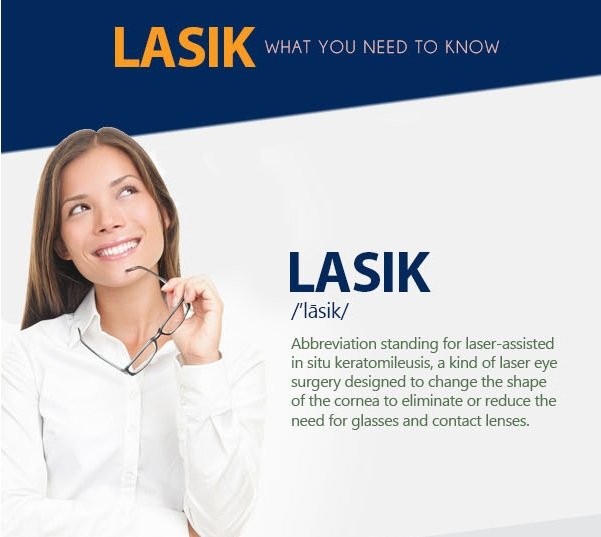Curious About The Distinctions In Between SMILE, LASIK, And PRK Eye Surgical Procedures?
Curious About The Distinctions In Between SMILE, LASIK, And PRK Eye Surgical Procedures?
Blog Article
Article By-Weber Wilder
If you have actually been taking into consideration SMILE eye surgical treatment, you may wonder exactly how it stacks up against LASIK and PRK. Each procedure has its own collection of advantages and factors to consider. From quicker recuperation times to potential risks, there are vital distinctions you ought to know before deciding. Understanding these differences will aid you make an informed selection that aligns with your certain demands and assumptions. Curious to know more about exactly how these procedures compare thoroughly? Keep checking out to gain a thorough understanding of SMILE, LASIK, and PRK.
SMILE Eye Surgical Treatment Introduction
If you're thinking about SMILE eye surgical procedure, you'll locate it to be a minimally invasive treatment with a quick recovery time. During SMILE (Tiny Cut Lenticule Extraction), a laser is utilized to develop a small, specific laceration in the cornea to remove a little piece of cells, improving it to remedy your vision. This differs from LASIK, where a flap is developed, and PRK, where the external layer of the cornea is completely eliminated.
One of the key benefits of SMILE is its minimally intrusive nature, resulting in a faster healing process and less pain post-surgery. The recovery time for SMILE is relatively fast, with several people experiencing boosted vision within a day or two. This makes it a popular option for those seeking a convenient and efficient vision adjustment treatment. Furthermore, SMILE has been shown to have a lower threat of completely dry eye syndrome compared to LASIK, making it a desirable choice for individuals concerned regarding this potential adverse effects.
Distinctions In Between SMILE, LASIK, and PRK
When comparing SMILE, LASIK, and PRK eye surgical treatments, it is essential to comprehend the distinct techniques used in each treatment for vision correction.
SMILE (Tiny Incision Lenticule Removal) is a minimally invasive treatment that includes producing a tiny cut to draw out a lenticule from the cornea, reshaping it to fix vision.
LASIK (Laser-Assisted Sitting Keratomileusis) entails producing a thin flap on the cornea, using a laser to reshape the underlying tissue, and after that repositioning the flap.
PRK (Photorefractive Keratectomy) removes the external layer of the cornea prior to reshaping the cells with a laser.
The main difference depends on the way the cornea is accessed and dealt with. click here to read is flapless, making it an excellent choice for people with thin corneas or those involved in get in touch with sports. LASIK supplies rapid aesthetic recuperation due to the flap development, however it may pose a greater threat of flap-related issues. PRK, although having a much longer healing period, prevents flap-related problems entirely.
Comprehending these variances is crucial in selecting the most suitable treatment for your vision adjustment requirements.
Pros and Cons Comparison
To evaluate the advantages and drawbacks of SMILE, LASIK, and PRK eye surgical treatments, it's essential to take into consideration the certain advantages and potential constraints of each treatment. Keep Reading provides the benefit of a minimally invasive treatment, with a smaller incision and possibly quicker recovery time compared to LASIK and PRK. It additionally decreases the risk of dry eye post-surgery, a common side effect of LASIK. However, SMILE might have restrictions in dealing with greater levels of myopia or astigmatism compared to LASIK.
LASIK surgery gives rapid visual recovery and very little discomfort throughout the treatment. It's extremely effective in treating a vast array of refractive errors, consisting of myopia, hyperopia, and astigmatism. Yet, LASIK carries a risk of flap difficulties, which can influence the corneal structure.
PRK eye surgical treatment, while not as popular as LASIK, stays clear of developing a corneal flap, minimizing the threat of flap-related issues. It's suitable for people with thin corneas or irregular corneal surface areas. Nevertheless, PRK has a longer recuperation time and may entail more pain during the recovery procedure.
Conclusion
So, when it concerns selecting in between SMILE, LASIK, and PRK, consider it like picking the excellent set of shoes. SMILE is like a sleek, comfortable set of sneakers - fast and easy.
LASIK is extra like stylish high heels - showy and quickly, but with some prospective threats.
PRK is like tough treking boots - reputable and long lasting, but calling for a little bit even more effort and time.
Ultimately, the best choice depends upon your individual requirements and preferences.
